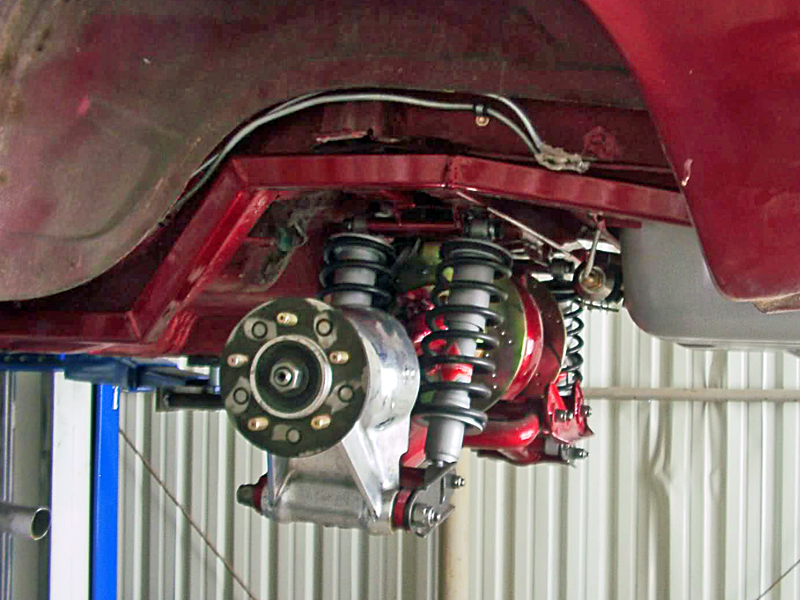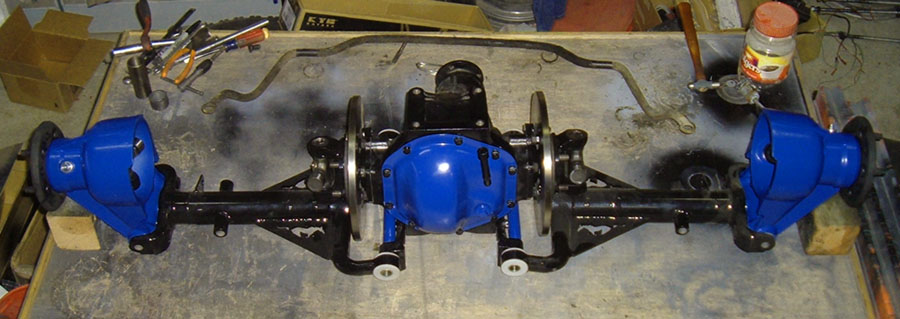

 |
 |
 |
 |
 |
You are not logged in. Would you like to login?

![]() Offline
Offline
hello all. i am building a car influenced by the mid 60s - early 70s Le Mans prototypes, such as the Ferrari 312 PB. i plan on using an IRS like that in the 312 PB, described in Wikipedia as follows: "Single top-link, reversed lower wishbone, twin radius arms, outboard spring/damper." This happens to be very much like the IRS on the Ford GT40. my question: is anyone out there aware of any literature that describes the design and analysis of such a suspension set-up? there's plenty of info on double A-arm designs, but i haven't been able to find what i'm looking for. also, the more popular suspension analysis software packages (such as WinGeo) work with double A-arm, but can it work with with my suspension? my original thought was to consider the twin radius arm as an a-arm with a really wide base, but not sure how that would work with the suspension analyzer. any and all thoughts and suggestions would be most appreciated. thanks very much in advance
![]() Offline
Offline
First - WELCOME ABOARD!
Second - building a period tribute vehicle - cool.
I think excepting for anti-squat/dive - you could consider the 4 link suspension maybe?
Those would be; the twin radius Arms (1 & 2) the single upper (3), and treat the reversed wishbone lower as a single (4).
May not be 100% accurate - but do-able and ought to close enough. You've seen that Suspension Analyzer has a number of "canned" setups that might get you started - and they have a trial period - but won't save etc as I recall.
Or - disregard the radius arms entirely as they initially provide anti-dive on braking & anti-squat on acceleration, and some caster control. I'm guessing you are wanting general roll center analysis, and migration analysis and maybe not so much the transients of step on it and stop?
If you decide to go a simplified route of analysis - I commend you to the thread on software solutions -- a few there to pick from - and many free!
Cheers - Jim
![]() Offline
Offline

Welcome to the board, sounds like quit a project. I agree with Jim, view your upper and lower same as a double wishbone. Break your suspension down into the different components. Anti squat and dive appears almost none on your type of chassis. I'm reading on a GT40 forum lowers are typically level appears downward to center with a roll center app. 4" high.
A suggestion might be to go to a forum where guys are building similar cars today. Club Cobra has some GT40 guys. Here's a thread from the GT40.com board. I also see guys there saying the same, it depends on what you plan to do with the car. How are you going to use it. A street setup will be different from a full race suspension.
Ralphy
Last edited by Ralphy (10/02/2012 7:16 pm)
![]() Offline
Offline
ralphy and phantomjock - thanks very much for your thoughts and input, and for the kind words. they are greatly appreciated. i realized a couple of things since writing.
first, the later generation corvette uses what appears to be a twin trailing arm IRS. i will ask around in that community about theory and analysis.
second: more importantly, i've come to the conclusion that, for rear-view analysis purposes only, if i disregard the twin trailing arms then the remaining lateral links effectively are a short-long arm IRS. obviously, with only this partial assembly in place there can be no analysis of anti-squat (which, of course, would be side view), but i'm sure i will figure something out.
what are your thoughts?
thanks!
![]() Offline
Offline

diavolillo,
You may not need to go far as for the C4 Corvette IRS. That is the one your talking about. Phantomjock is a Corvette guy, C3 trying to convert to a C5/C6. However he still may be able to help. A great Vette board is Vettemod.com
Another point, the C4 does not use parallel trailing links. Race geometries tend to be a bit more neutral than OEM designs. A figure I read once was app. 1" to 2" rise per foot in regard to trailing links.
Ralphy
Last edited by Ralphy (10/05/2012 5:51 pm)